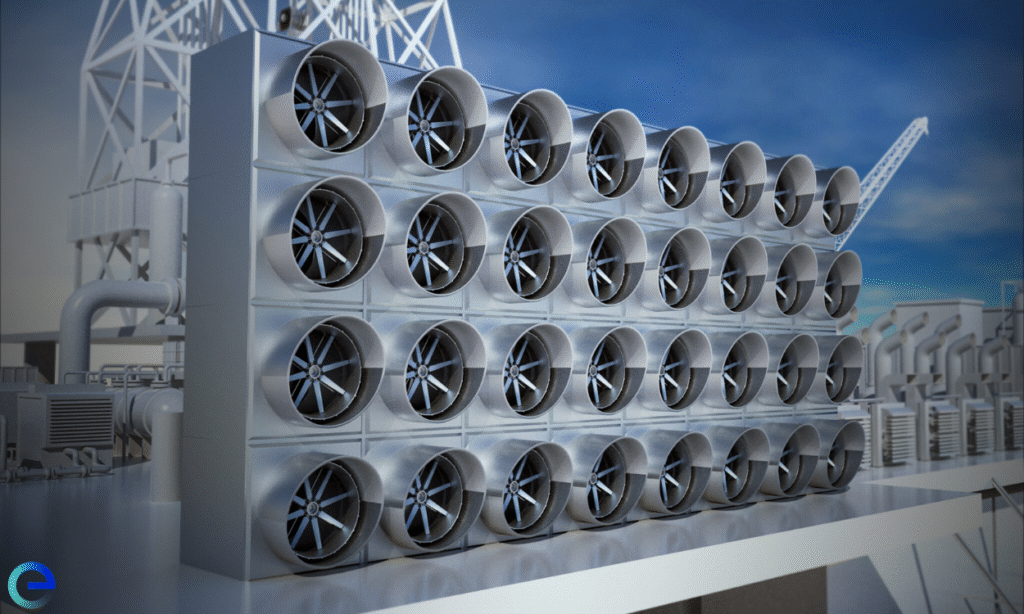
Fifteen years ago, when carbon offsetting was gaining popularity, starting with tree-planting and later expanding to other clean energy projects, it seemed like a good approach to reducing the carbon footprint. But the emissions have accelerated, and to have a positive impact on the environment that is under threat requires businesses taking real action.
The world must embrace technology for its carbon removal and scale to reach 10 billion tons of CO₂ by 2050 to ensure we limit warming to 1.5°C. Nature-based solutions account for 99.9% of the current 2 gigatonnes of CO₂ removed annually, while durable, engineered removals only reach millions of tons. Here is a gap that explains why carbon offsetting is not sufficient any more to solve the climate crisis.
Carbon removal technology provides permanent storage solutions instead of temporary carbon displacement. Many organizations no longer deem carbon neutrality adequate. Companies aiming to become carbon negative (also known as climate positive) drive innovation in this sector.
Carbon removal and offsetting differ mainly in how they affect atmospheric CO₂ levels over time. Carbon removal technologies tackle climate change head-on and provide lasting solutions rather than quick fixes.
Burning fossil fuels releases emissions that stay in the atmosphere for centuries, which creates a permanent impact. Traditional offsetting methods like forest conservation only store carbon temporarily. Physical equivalence between storage and emissions requires CO₂ to remain stored for thousands of years. This time difference creates a significant challenge—temporary storage just delays climate effects instead of solving them.
Carbon projects need to store carbon for 1,000 years or more to be called ”permanent’—matching how long carbon emissions last in the atmosphere. Most current carbon credits in the voluntary market guarantee storage for just decades to a century, which simply delays emissions. These temporary fixes end up justifying continued emissions without giving equal climate benefits.
Carbon removal technology plays a vital part in dealing with ‘legacy ’emissions’—accumulated CO₂ from over a century’s worth of fossil fuel use. Removing these historical emissions is necessary to reduce atmospheric concentrations to safer levels and limit temperature rise within 1.5 degrees C.
Direct Air Capture (DAC) and other engineered solutions can pull CO₂ straight from the atmosphere to tackle these legacy emissions. Engineered solutions store carbon for hundreds to thousands of years or permanently, unlike nature-based approaches. New carbon removal technologies must grow to remove multiple gigatonnes by 2050 to balance remaining emissions and reduce warming.
IPCC points to three main reasons we need carbon removal: reaching net zero fast enough, balancing emissions we can’t eliminate, and achieving net negative emissions to reverse climate damage. Building an industry that can remove millions of tons of CO₂ requires advancing different approaches. Lower-cost options face limits while options with more potential cost more.
Companies worldwide are showing us how carbon removal technology works in real life. These trailblazers create solutions that lock away carbon dioxide forever and bring extra environmental benefits.
Planetary Technologies has written its name in history books by delivering the world’s first Ocean Alkalinity Enhancement (OAE) carbon removals. Their Halifax project achieved 138 tons of carbon dioxide removal, with Shopify getting 96 tons and Stripe receiving 42 tons. The process does more than remove CO₂ – it fights ocean acidification and creates better conditions for marine life. The company’s work with Dalhousie University and Nova Scotia Power proves their technology is safe for the environment. Their monitoring shows no harmful effects on local ecosystems or buildup of toxins in sediments.
UNDO uses Enhanced Rock Weathering (ERW) to speed up nature’s way of trapping carbon dioxide. Their field trials show that farms using this method saw crop yields jump by 15% across different farming techniques. They spread crushed silicate rocks like basalt on farmland, where these rocks naturally bind with CO₂ to create stable carbonates. This simple method keeps carbon locked away for over 100,000 years and helps balance soil pH while boosting nutrient availability for crops.
Mati Carbon brings enhanced rock weathering to small farms in developing countries. The company delivered its first 50 tons of carbon removal in March 2024 from projects that started in 2022. Their work spans India, Tanzania, and Zambia, where they spread basalt rock dust on farmland. This dust reacts with CO₂ and turns it into bicarbonate, which stays trapped in deep aquifers or oceans for over 10,000 years. Small farmers benefit too—their crops become more resistant to drought, and their soil gets healthier.
Exomad Green turns leftover forest materials into biochar through pyrolysis. Their biochar contains 84% carbon and keeps it locked in soil for centuries. Microsoft recently signed a groundbreaking 10-year deal with them to remove 1.24 million tons of CO₂. This stands as the biggest biochar carbon removal agreement ever made. The beauty of their approach lies in using waste biomass that would otherwise burn up. This prevents emissions and creates a valuable soil supplement.
Businesses must understand their current emissions before implementing solutions when they want to move beyond traditional offsetting to carbon removal technology.
Accurate measurement of emissions across all three scopes creates the foundation for any carbon removal strategy. Scope 1 represents direct emissions from owned sources. Scope 2 has indirect emissions from purchased energy. Scope 3 covers all other indirect emissions in a company’s value chain. Most companies see their Scope 3 emissions making up the majority of their total carbon footprint. This makes a complete measurement crucial to develop effective removal strategies.
Companies need to review which carbon removal approaches match their industry needs after they establish baseline emissions. Their decision should balance storage durability, costs, and specific industry applications. They should create a diverse portfolio of removal solutions that can adapt over time. The Exponential Roadmap Initiative suggests companies should reduce emissions while they invest in removals.
Mutually beneficial alliances with carbon removal technology providers give businesses access to specialized expertise and innovative solutions. Companies can choose different sourcing strategies. These range from direct project involvement to participation in buyers’ clubs like Frontier. These clubs pool resources to get similar carbon removal solutions. Early adopters benefit from secure supply chains and competitive pricing.
The Science Based Targets initiative (SBTi) recommends businesses include carbon removals in their net-zero strategy. This specifically helps neutralize residual emissions after major internal reductions. Companies should start investing in removals right away. They need interim milestones to increase volumes toward net-zero. This approach lines up with emerging industry standards that suggest a complete transition to removals by their net-zero target date.
Carbon removal technology shows promise but faces several roadblocks in implementation. Teams must work together across financial, regulatory, and technical areas to overcome these challenges.
The cost of scaling carbon removal solutions remains a huge barrier. Direct Air Capture costs between $500-1900 per ton. Bioenergy with Carbon Capture and Storage could be cheaper at $40-50 per ton in biorefineries and $95-120 per ton for power plants. New BECCS projects currently cost $75-300 per ton. These prices are much higher than typical carbon credit prices, which creates gaps in the market.
New financing approaches help bridge this gap. Companies like Microsoft lead the way with long-term purchase agreements. Microsoft accounts for 80% of total credits bought from carbon removal projects. These agreements help developers secure funding and give buyers predictable costs.
The carbon removal market lacks unity in its methods, standards, and verification systems. More than 30 different ways exist to credit engineered carbon removal methods. This variety makes things complex and hurts market trust. The Core Carbon Principles try to set quality standards, but getting everyone to agree proves difficult.
The carbon removal sector lacks a natural market where buyers just need its services. Very few regions include carbon removal in their compliance systems. California’s Low Carbon Fuel Standard has direct air capture in its scope, but wider adoption in compliance markets remains slow.
Trust built through resilient monitoring, reporting, and verification (MRV) systems are the foundations for market growth. Digital MRV cuts down paperwork while improving independent oversight. An industry expert points out, “Independent digital MRV adds an extra level of safety… ensuring credits meet high standards of integrity.” Projects must share all their results openly—even negative ones—to build stronger scientific foundations.
The technology of carbon removal has reached a significant milestone. Traditional carbon offsetting approaches can’t solve the climate crisis—they only delay it, so the world needs to scale permanent carbon removal solutions faster.
Permanent storage solutions deliver substantially better climate benefits than temporary offsets. Most carbon credits only guarantee storage for decades to a century. However, truly effective solutions must store carbon for 1,000 years or more to match how long emissions stay in the atmosphere. It also tackles the built-up emissions from over a century of fossil fuel use—something offsetting can’t solve.
Several companies are showing how these technologies work in real life, with breakthroughs in ocean-based carbon removal helping to fight ocean acidification as well as with enhanced rock weathering methods to trap carbon dioxide for thousands of years while boosting crop yields.
Companies looking to switch from offsetting to removal should first measure their carbon footprint across all three scopes. They can then create a mix of removal solutions that fit their industry’s needs. Strategic collaborations with technology providers help access specialized expertise and innovative approaches.
This path has its challenges, but there are innovative financing models, standard frameworks, and supportive policies that can help overcome those obstacles.
Carbon removal technology marks the next step beyond traditional offsetting, and it can actively reverse environmental damage. Current removal capacity remains nowhere near what climate science tells us we need. Yet the quick development of different technological approaches gives us real hope. The climate crisis needs both immediate emission cuts and scaled carbon removal to work together. Businesses, governments, and individuals must accept new ideas about carbon removal technology as key tools to fight climate change.
